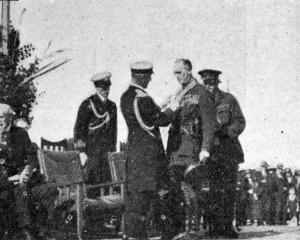London: There has just been revealed quite a strong movement in the Church of England for the admission of women to the ministry and their ordination as priests.
A committee has made preliminary inquiries with a view to moving for a conference at which it is suggested clergymen's wives and women church workers should be present.
If it comes to anything the conference would be held about September.
To get some idea of the measure of acceptance which the proposal would be likely to enjoy, letters were sent out to a number of the leading personalities in church life.
Fifty replies were received in favour both of the conference and of the admission of women to the priesthood.
One of these, which is published, says:-''Our feeling is that priesthood is a human office, not at all a sexual one, and that since women are human beings, it is unreasonable to refuse them an opportunity of hold it merely because they are women.''
Another reply anticipates the consecration of women bishops, and suggests as a first step the ordination of a certain number of the present deaconesses.
As is the case in the suffrage movement, it is from the women themselves that a strong body of opposition emanates.
Within the Church, The Times says, the feeling seems to be decidedly against the step.
At the representative Church Council a few weeks ago it was decided that women should be permitted to sit on parochial church councils, but a further resolution that they should be allowed to sit on Ruridecanal Conferences and Diocesan Conferences was rejected by 141 votes to 76.
•Sir Ernest Rutherford, the eminent chemist, delivered a lecture in the Town Hall, Wellington, last night on ''The Transformation of Matter and the Structure of the Atom'' (says a Press Association message).
The atom, he said, was not the smallest known body, but consisted of constituents. Some atoms were not indestructible.
Radium, for example, disappeared in the ratio of half its substance in 2000 years. He and his students has discovered some 30 new unstable elements associated with radium.
Altogether there were five elements whose atoms were destructible.
The lecturer performed the experiment of counting the atoms by means of an apparatus invented by Professor Laby, of Victoria College.
This had only been performed twice before, once in Washington, U.S.A., and once in England.
Sir Ernest also explained his new atomic theory. In the centre of each atom was a nucleus surrounded by rings.
The nucleus contained positive particles and the rings an equal number of negative particles which preserved the balance and prevented disintegration.
The nucleus contained another system of its own.
When the nature of atoms was fully understood, concluded the lecturer, the properties of everything on this earth would be understood.
•At a large and representative meeting of hotelkeepers convened yesterday strong exception was taken to the statement by ''Citizen'' in a letter in the Otago Daily Times yesterday that ''Members of the Expeditionary Force now in camp at Tahuna Park were being supplied with free drinks at certain hotels, in order to get them to vote for continuance when they exercise their franchise as Parliament is providing means for them to do.''
This statement was declared to be wholly without foundation, and the opinion was expressed that the members of our Expeditionary Force would resent the suggestion that their votes were purchasable. - ODT, 5.9.1914.












